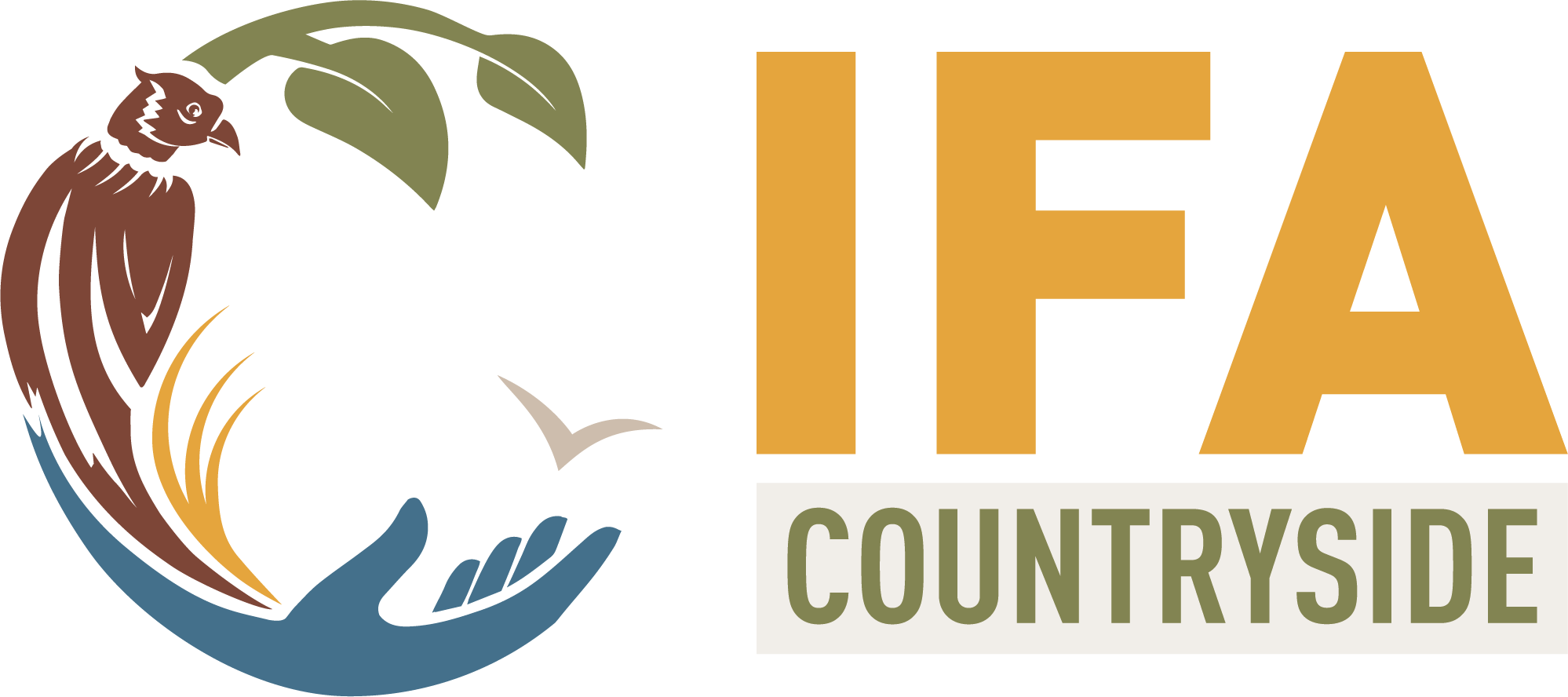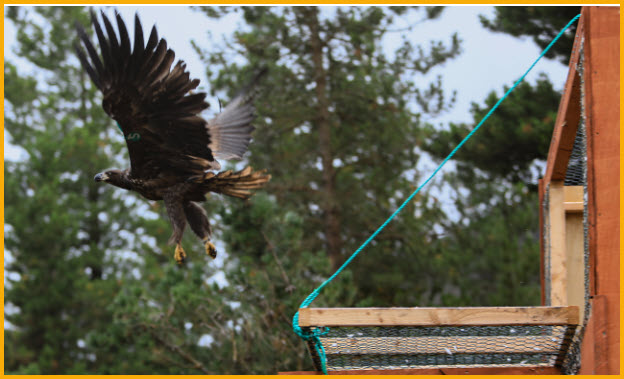The National Parks and Wildlife Service (NPWS) at the Department of Housing, Local Government and Heritage is seeking any information relating to a White-tailed Eagle found dead on lands between Lough Ramar, County Cavan and Lough Sheelin, Co Westmeath and in November, 2022.
The eagle, part of a national re-introduction programme undertaken by the NPWS, was found to have been killed by ingesting poison used as a ‘pest control’. The NPWS is also urging people to be aware that the use of poisonous substances for the control of species such as foxes and crows is illegal and has been since 2010.
The healthy juvenile male White-tailed eagle – just over a year old – had been brought in as a chick in 2021 from Norway under phase two of a national re-introduction programme. Fitted with a small satellite tag prior to its release on Lough Derg in 2021 the bird had been largely spending time around Lough Sheelin (Co. Westmeath) and neighbouring counties and seemed to have settled into its new surroundings.
A further two White-tailed eagles have been observed in the general Westmeath area – a 2020 female released on Lough Derg (who has been largely staying on Westmeath lakes for nearly 18 months now) and a 2021 male released in Killarney National Park. These two birds have been in Westmeath since April of last year. Reaching maturity at around five years old, these young eagles will hopefully survive to strengthen the small Irish breeding population that has become established since the reintroduction programme began in 2007. The NPWS was delighted that three of these birds had chosen Westmeath as their new home, and their movements were being monitored, until the tag from the juvenile male White-tailed eagle indicated it was in the one spot in Cavan for a troubling length of time.
A local NPWS ranger collected the birds body on agricultural land in Cavan, and following the RAPTOR Protocol, a range of tests were carried out by staff of the Dublin Regional Veterinary Laboratory of the Department of Agriculture, Food and the Marine at Backweston.
These immediately ruled out Avian Influenza, illegal shooting or trauma. Subsequent toxicology tests conducted by the State Laboratory, have confirmed it had been poisoned with an illegal substance, known as Carbofuran. It is not known how the eagle ingested this substance, but possibly from eating carrion (a dead animal) laced with it.
Carbofuran is a plant protection chemical (i.e. an insecticide) which is extremely toxic, particularly to birds. Studies in the United States in the 1990s showed a single granule alone, resembling a natural seed grain in size and shape, could kill a bird. Its approval for use in crop production was withdrawn over a decade ago in Ireland, and possession of carbofuran is illegal. Despite this, carbofuran and other poisons continue to be used to target wildlife in the wider countryside.
NPWS Regional Manager Maurice Eakin said that white-tailed eagles are a protected species under the Wildlife Acts, and this latest fatality once again highlights how prevalent this illegal practice continues to be.
“In this instance, it is particularly disturbing that the reckless laying of poison has resulted in the death of a White-tailed eagle, one of our largest and most majestic bird species, which had been persecuted to extinction by the early 1900s,” he said.
The potential for positive economic benefits from the re-introduction of the eagles has been demonstrated in Mountshannon, Co. Clare, when the first breeding pair in Ireland in over a century nested within sight of the village in 2012, attracting thousands of visitors over the following years.
Since its establishment in 2011, the RAPTOR Protocol (Recording and Addressing Persecution and Threats to Our Raptors), a collaborative initiative between the NPWS, the Regional Veterinary Laboratories (DAFM) and the State Laboratory, has quantified and highlighted the impact of illegal poisoning in Irish birds of prey.
Although some landowners may have in the past commonly used poisons to deliberately control crows and foxes, especially around lambing time, Mr Eakin said the NPWS would like to issue a reminder that use of poisonous substances for the control of foxes and crows is illegal and has been since 2010.
Mr Eakin said the NPWS is seeking any information from the public in the Westmeath/Cavan region, particularly anyone who may have seen any persons or vehicles acting suspiciously in recent weeks in the general area between Lough Sheelin and Lough Ramar, of Co. Cavan, which may assist them with their enquiries.
Since 2020, almost all chicks released by the White-tailed Eagle project are satellite-tagged, which enables the project to follow their movements as they disperse and establish in new areas away from natal sites and, in cases like this, to determine the locations of any tagged birds which may be in trouble.
Anyone with information on the matter is asked to contact NPWS at 01-5393156. These matters will be treated confidentially. Alternatively, information can be supplied to An Garda Síochana.
Further information on NPWS work protecting raptors at: https://www.npws.ie/research-projects/animal-species/birds/raptors-and-owls
Further information on Phase 2 of the NPWS White-tailed Eagle project can be found at:
https://www.npws.ie/research-projects/animal-species/birds/white-tailed-eagle-phase-2
and more general information https://www.glengarriffnaturereserve.ie/white-tailed-sea-eagle-facts/
Department of Housing, Local Government and Heritage Press Office
Tel: (01) 888 2638 (direct)
Email: [email protected]
Website: gov.ie/housing
Twitter: @DeptHousingIRL

